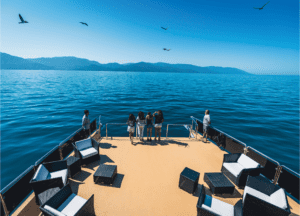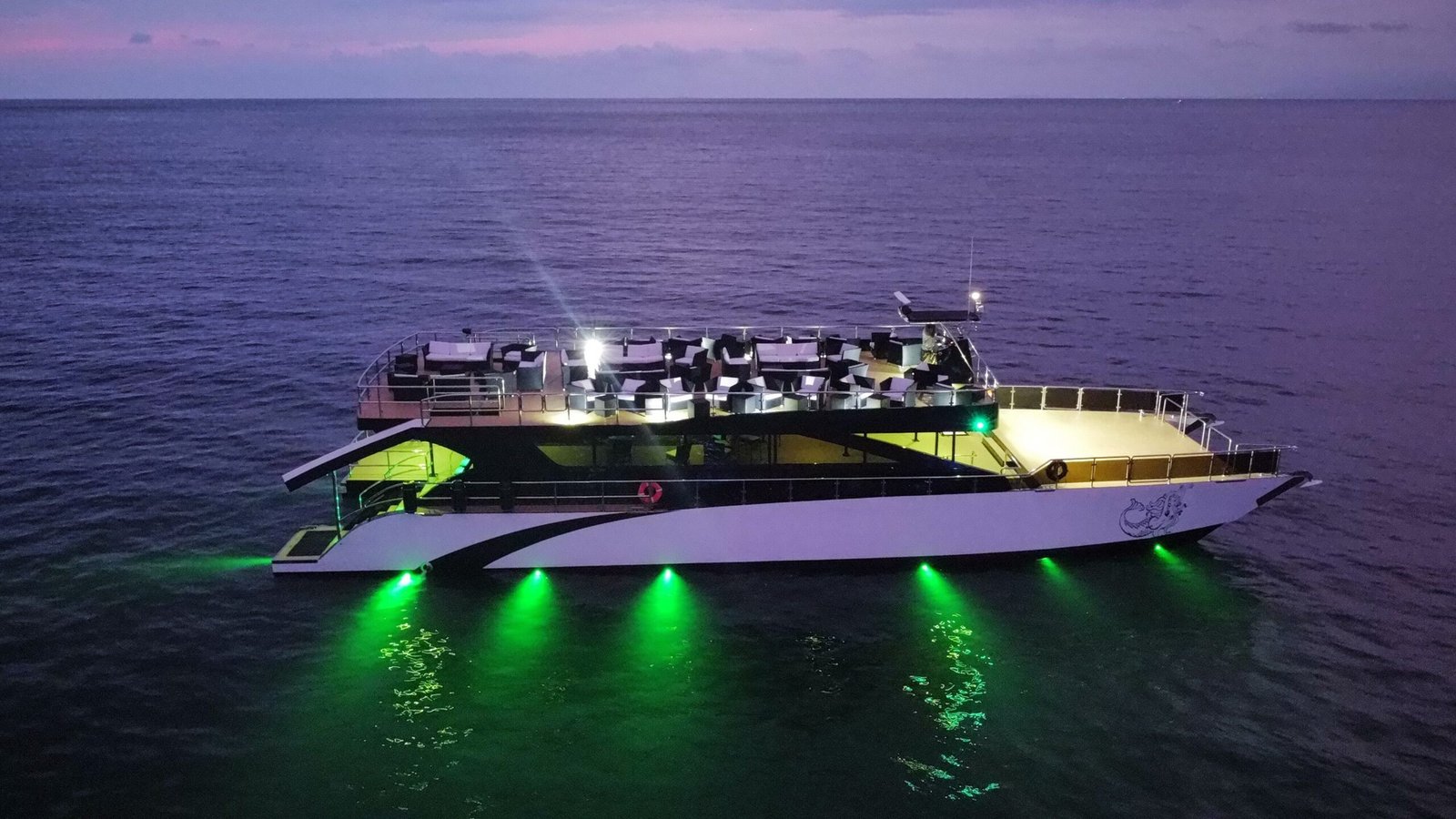Building your own boat is one of the most fulfilling projects a hobbyist can take on. It combines hands-on craftsmanship, creativity, and the excitement of adventure, especially when your goal is to explore new waters or even hunt for hidden treasures. In 2026, the rise of affordable materials, online tutorials, and boat-building kits has made DIY boating more accessible than ever. Even if you dream of a small wooden skiff for weekend fishing or a compact sailboat for long coastal trips, building your own craft offers unmatched pride and independence. This guide dives deep into how you can design, build, and enjoy a personal boat, packed with ideas, inspiration, and real-life examples to help you get started confidently.
Why Building Your Own Boat Is a Rewarding Project
Building your own boat is one of the most fulfilling projects any DIY enthusiast can take on. It combines craftsmanship, creativity, and personal achievement in a way few other hobbies can. Unlike buying a pre-made craft, constructing your own gives you full control over every detail, from materials and layout to engine type and accessories. It teaches problem-solving, patience, and planning while giving you a sense of ownership that no store-bought model can match. This project is perfect for hobbyists, weekend builders, and even treasure hunters looking to create a customized vessel for exploration or coastal adventure. Each build becomes more than a boat; it becomes a story of personal effort and satisfaction.
Choosing Your Boat Type: Power, Sail, or Row Craft
Before picking up tools, it’s essential to decide what kind of boat best fits your purpose and skill level. Each type has its own strengths and unique challenges, and your choice determines the kind of building plan, materials, and budget you’ll need. For adventurers seeking speed and performance, motorboats deliver excitement. For eco-conscious builders, sailboats offer quiet and sustainable travel. For beginners or those on smaller budgets, row or paddle boats provide simplicity and versatility. Understanding how each option aligns with your intended use, whether it’s fishing, treasure hunting, or leisure cruising, helps ensure you start with the right design and expectations.
Motor DIY Boats – Power Projects for Adventure
A motor-powered DIY boat is perfect for thrill-seekers and explorers who want to cover large distances quickly. These boats typically use outboard or inboard engines, depending on their size and power needs. The hull design plays a crucial role in performance; a deep V-hull cuts through waves, while a flat-bottom hull glides smoothly in calm waters. Common materials for DIY powerboats include marine plywood and fiberglass, which balance strength and lightness. Beginners often start with smaller builds using 10–25 horsepower engines. Powerboats are excellent for fishing trips, treasure expeditions, or simply enjoying speed on open water. With the right design, they can combine adventure and reliability in one dynamic package.
Sail DIY Boats – Quiet, Eco-Friendly Builds
Sailboats have always appealed to builders who love the quiet and simplicity of wind-powered travel. These boats use sails and rigging instead of engines, making them more sustainable and cost-effective in the long run. Typical designs include sloop, catboat, or ketch rigs, depending on how complex you want your project to be. DIY sailors appreciate the sense of calm that comes from harnessing nature’s power rather than relying on fuel. For treasure enthusiasts or explorers, a sailboat can travel longer distances with minimal cost and noise, allowing access to remote areas. Many beginners start with small, single-sail dinghies before moving on to larger coastal cruisers once they gain experience.
Row or Paddle Craft – The Minimal Budget Build
For hobbyists on a budget, row or paddle boats offer an excellent entry point into DIY boat building. These lightweight crafts are perfect for calm waters such as lakes, rivers, and protected bays. They require fewer materials and tools, making them achievable for beginners using simple plans. Typically built from plywood or lightweight composite materials, these boats can be assembled in a small workspace with basic equipment. Despite their simplicity, they can be customized with storage areas, fishing gear mounts, or even decorative finishes. Rowboats and kayaks are great for short adventures, fishing, or local treasure searches, offering both practicality and creative freedom without high expenses.
Designing Your Boat: Plan, Materials & Budget
Designing your boat is where the project truly begins to take shape. A good plan defines not only how your boat will look but also how safe and functional it will be. Understanding the blueprints, materials, and costs early helps prevent mistakes and ensures a smoother building experience. Whether you’re building a small skiff or a mid-sized sailing craft, having a clear design strategy is essential. Consider your experience, available tools, and the type of water you’ll be using the boat in. The planning stage sets the foundation for a safe, durable, and enjoyable boat that meets your goals and budget.
Understanding Boat Plans & Blueprints
A solid plan is the backbone of any successful DIY build. Blueprints outline every aspect of the structure, including hull shape, balance, and weight distribution. When selecting a plan, match it to your skill level and intended use. Beginners should choose pre-tested plans that include step-by-step instructions, while advanced builders can work from scaled drawings or online design tools. Reliable sources like Duckworks Boat Builders Supply or Glen-L Marine provide tested and safe plans for all experience levels. Reading and interpreting blueprints properly ensures your craft is not only functional but also seaworthy once launched.
Selecting Materials: Wood, Fiberglass, or Aluminium?
The choice of material defines your boat’s durability, weight, and maintenance needs. Wooden boats are traditional and affordable, but require regular sealing to prevent rot. Fiberglass is lightweight and low-maintenance, ideal for long-term use and smooth finishes. Aluminum, though more expensive, offers outstanding strength and corrosion resistance, perfect for saltwater environments. Many DIY builders mix materials, for example, a wooden frame with fiberglass coating for extra protection. Here’s a quick comparison:
| Material | Pros | Cons | Ideal For |
| Wood | Affordable, easy to shape | Needs regular maintenance | Beginners & hobbyists |
| Fiberglass | Low maintenance, durable | More costly upfront | Long-term use |
| Aluminium | Strong, corrosion-resistant | Requires welding expertise | Saltwater environments |
Choosing the right material helps balance cost, effort, and performance in your DIY project.
Budgeting Your Build: Real Costs & Hidden Fees
Budgeting your boat build prevents surprises later. Typical costs include materials, tools, fasteners, paint, and protective finishes. A small rowboat can be built for under $1,000, while a medium sailboat may reach $3,000–$6,000, depending on equipment and finish. However, there are hidden expenses often overlooked, such as trailer costs, registration, and storage fees. If you plan to motorize your craft, factor in fuel and engine maintenance. Here’s a rough estimate of DIY build expenses:
| Expense Type | Estimated Cost (USD) |
| Materials & hardware | 500–2,000 |
| Tools & equipment | 300–1,000 |
| Paint & sealant | 100–400 |
| Launch & registration | 150–300 |
A detailed cost plan ensures your dream build stays within reach without cutting corners on safety or quality.
Creative Build Ideas & Inspiration for Treasure-Hunt Boats
Building a boat for treasure hunting brings creativity and imagination together. These boats aren’t just about function, they’re designed for adventure and exploration. Whether you’re chasing hidden treasures, mapping coastal areas, or simply enjoying nature, customizing your boat adds excitement and purpose. You can modify designs with storage areas, gear compartments, and safety upgrades to suit your goals. By blending creative ideas with proven designs, you can build something unique that reflects your personality while being ready for real adventure.
Styling Your Boat for Adventure & Treasure Chases
Adding functional style to your boat enhances both its look and usefulness. For treasure hunting or coastal exploration, consider features like waterproof storage compartments, foldable seats, or elevated platforms for better visibility. Installing solar panels for lighting or device charging can make long trips easier. Modular layouts help you rearrange equipment based on your needs, while durable coatings keep your craft looking good and protected. Personalizing the color scheme or naming your vessel gives it a unique identity, making each trip feel more like an expedition than a casual ride.
Real-Life DIY Boat Stories: Beginner Builds That Worked
Many successful boat builders started as beginners with simple tools and limited experience. Online communities are full of stories where people built their first kayak, canoe, or sailboat using affordable materials and online plans. Some even used reclaimed wood or recycled parts to create functional and stylish crafts. These stories prove that passion matters more than experience. Builders often describe the satisfaction of seeing their boat float for the first time as one of the proudest moments of their lives. Such examples inspire others to start their own projects, proving that anyone can achieve great results with patience and commitment.
Custom Features: From Underwater Cameras to Solo Explorer Set-ups
Adding creative features can make your DIY boat stand out. For treasure seekers, underwater cameras or sonar systems can help locate items beneath the surface. Solo explorers may prefer lightweight builds with compact storage and foldable gear. Mounting brackets for GoPro cameras, fishing rods, or diving equipment adds functionality without cluttering the deck. You can even build modular sections for easy upgrades in the future. These add-ons turn a simple craft into a customized exploration vessel capable of supporting any adventure you dream of.
Step-by-Step: From Workshop to Water in 2026
Building your own boat is a journey that moves from concept to craftsmanship. Every stage, from shaping the hull to fitting the final bolt, matters. In 2026, more tools, online resources, and communities than ever make DIY boat building accessible to anyone with patience and enthusiasm. Understanding the right construction techniques, installing reliable systems, and preparing your boat for safe use on the water ensures lasting results. Whether you’re using modern kits or building from scratch, following a structured process is key to success and safety.
Launching the Hull: Construction Methods (Stitch & Glue, Strip-built, Kit Boats)
The hull is the foundation of your boat, and how you build it depends on your skill level and resources. The stitch-and-glue method is a favorite among beginners because it uses pre-cut plywood panels stitched together with wire, then sealed with epoxy. It’s affordable, simple, and produces strong, lightweight boats. Strip-built construction, on the other hand, uses thin wood strips glued edge-to-edge over a mold, offering a smoother finish and elegant curves, ideal for kayaks and canoes. Kit boats provide pre-measured materials, instructions, and hardware, reducing guesswork and time. They’re perfect for first-time builders who want guidance without sacrificing hands-on experience. Each method has its learning curve, but all can lead to a durable, beautiful craft ready for adventure.
Fitting Out: Engine, Propulsion, Navigation & Safety Gear
Once the hull is built, it’s time to equip your boat for the water. Fitting out includes installing the engine or propulsion system, navigation tools, and safety essentials. For powered boats, ensure the engine’s horsepower matches your boat’s size. Smaller boats may use electric trolling motors for quiet, low-cost operation. Basic navigation gear like GPS, compass, and waterproof maps is vital even for short trips. A good safety checklist should include:
- Life jackets for all passengers
- Fire extinguisher
- First-aid kit
- Flares or signaling devices
- Anchor and rope
- Bilge pump
- Emergency paddle
Adding small extras like waterproof storage boxes and portable solar chargers can also improve comfort and readiness. Proper fitting and secure installation are essential for both performance and safety.
Sea Trials, Launch & Maintenance Checklist
Before heading out on your first real voyage, every DIY boat needs sea trials to test balance, performance, and safety. Start in calm, shallow water. Check for leaks, steering response, and weight distribution. Note how your boat handles turns, acceleration, and stability. Once you’re satisfied, record the results to make future improvements.
Regular maintenance is crucial for longevity. Inspect joints, reapply sealant where needed, and check hardware for corrosion. Clean the hull after each outing, especially if used in saltwater, and store your craft in a dry, shaded place. A simple maintenance log helps track repairs and upgrades over time, keeping your DIY boat seaworthy for years.
Where to Find Plans, Kits & Community Support in 2026
Finding reliable resources can make your build faster and more enjoyable. Builders can choose between kits, which include all pre-cut materials, and custom builds, where you source and modify everything yourself. Kits save time and ensure accuracy, while custom builds allow full creative freedom.
Joining online forums or local workshops provides hands-on guidance and motivation. Many communities host virtual meetups where builders share progress and troubleshooting tips. Learning from others shortens your learning curve and adds confidence throughout the project.
Safety, Regulations & Environmental Considerations
Every DIY boat must meet local safety and registration standards before it’s launched. Requirements vary by region, but most include registration numbers, proof of ownership, and compliance with marine safety laws. Some areas may require inspection before public use.
For environmental responsibility, choose eco-friendly materials like sustainably sourced wood or water-based paints and avoid harmful resins or plastics. Using electric or solar propulsion systems reduces emissions and noise pollution. Always dispose of waste materials properly and follow marine park regulations when exploring new waters. Building responsibly ensures your boat is both safe and environmentally sound, ready for a sustainable treasure hunt.
How Palmara Charters Inspires Real-Life Adventure Beyond the Build
At Palmara Charters, we understand the passion behind every boat project, the desire for freedom, discovery, and connection to the sea. While DIY boat builders create their dream vessels from scratch, Palmara brings those dreams to life through unforgettable experiences on the water. Based in Puerto Vallarta, Palmara Charters offers luxury yachts, private catamarans, and customized boat trips designed for every kind of explorer. Whether you’re testing your new build, seeking design inspiration, or simply enjoying time with family on the Bay of Banderas, our team ensures your time at sea is comfortable, safe, and filled with memories. For those who love boats, whether built by hand or chartered for luxury, Palmara connects your creativity with real-world ocean adventures.
FAQs: Frequently Asked Questions by DIY Boat Builders
How much time does a typical build take?
A small boat can take 40–100 hours, while larger sailboats may need several months, depending on your available time and complexity.
What skill level do I need to start?
Beginners can handle simple stitch-and-glue or kit boats with basic woodworking knowledge. More advanced builds benefit from prior carpentry or fiberglass experience.
Are DIY boats seaworthy?
Yes, when properly built, tested, and maintained, DIY boats can be just as seaworthy as factory models.
Can I build on a budget under USD $3,000?
Absolutely. Many small boats, such as kayaks or skiffs, can be built for under $3,000 with efficient material choices.
What happens if I want to sell or upgrade?
You can sell your boat like any other craft once it meets registration standards. Many builders reinvest in larger or more advanced projects after their first success.
Final Thoughts: Your DIY Boat Journey Begins Now
Building a boat is more than a hobby: it’s a personal challenge that rewards patience, creativity, and craftsmanship. From selecting the right design to completing sea trials, every step brings you closer to the satisfaction of sailing something you made yourself. Whether your goal is a simple paddle boat or a power-driven treasure vessel, success starts with planning, realistic budgeting, and attention to safety. Begin by downloading trusted plans, gathering materials, and connecting with other DIY builders. With the right mindset and preparation, your journey from workshop to water can begin today.









